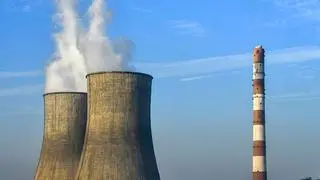The demand for steel worldwide will witness a 1.8 per cent growth in 2023 and 1.9 per cent in 2024, the World Steel Association (worldsteel), a body which has a membership of every steel producing country, said.
In its short-range outlook, worldsteel said the demand will increase to 1,814.5 million tonnes (mt) in 2023 and 1,849.1 mt in 2024. The association had pegged 2022 crude steel at 1,831.5 mt, down 4.3 per cent compared with 2021.
Situation better in developing economies
Worldsteel said demand recovery would be slow in developed economies while it sounded upbeat about the prospects of developing nations. “Steel demand has been feeling the impact of the high inflation and interest rate environment. Since the second half of 2022, the activities of steel-using sectors have been cooling sharply both for most sectors and regions as both investment and consumption weakened. The situation continued into 2023, particularly affecting the EU and the US. Considering the delayed effect of the tightening monetary policy, we expect steel demand recovery in 2024 to be slow in the advanced economies. Emerging economies are expected to grow faster than developed economies, but the performance of emerging economies continues to diverge, with emerging Asia maintaining resilience,” the organisation said.
India growth story to continue
The Indian economy remains stable against the pressure of the high interest rate environment, and India’s steel demand is expected to continue its high growth momentum. Growth in India’s construction sector is driven by government spending on infrastructure and recovery in private investment. Infrastructure investment will also support the capital goods sector growth. Healthy growth momentum will continue in the automotive sector as well. After growth of 9.3 per cent in 2022, steel demand is expected to show healthy growth of 8.6 per cent in 2023 and 7.7 per cent in 2024.
China may see slightly positive growth
The outlook said Chinese steel demand contracted in 2021 and 2022 as its economy decelerated sharply due to unexpected lockdowns that extended across the country. The depression in the property market that continued into 2023 is weighing on the economy, leading to an unexpected slowing of the Chinese economy.
Almost all steel-using sectors have shown signs of weakening since the second quarter. The government may kick off some additional infrastructure projects. As a result, infrastructure investment in both 2023 and 2024 is expected to remain moderately positive.









Comments
Comments have to be in English, and in full sentences. They cannot be abusive or personal. Please abide by our community guidelines for posting your comments.
We have migrated to a new commenting platform. If you are already a registered user of TheHindu Businessline and logged in, you may continue to engage with our articles. If you do not have an account please register and login to post comments. Users can access their older comments by logging into their accounts on Vuukle.